
“Carbon capture will help ensure we can continue to power the American economy and continue to lead the world in emissions reduction. American innovation – not government regulation – is the path to success for our environment and our economy.”

“Carbon capture will help ensure we can continue to power the American economy and continue to lead the world in emissions reduction. American innovation – not government regulation – is the path to success for our environment and our economy.”

“I continue to support an all-of-the above energy policy. This includes encouraging and incentivizing clean energy policies as well as exploring the possibility of offshore energy exploration. While I wish we were at a point where we could solely rely on clean energy, we’re not there yet. As we research and develop new innovative solutions to transition to renewable, cleaner energy, I believe it’s irresponsible to not at least see what is out there off the coast.”
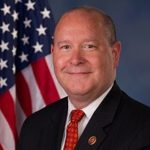
“Climate change is an issue that needs to be addressed. … The right way to tackle climate change policy is by continuing to remove barriers to innovation, incentivizing more clean energy, and putting forth realistic, free-market solutions driven by the American consumer – a proven approach that has already resulted in significant emissions reductions in the United States.”

“Unnecessary government red tape is preventing us from taking advantage of clean, renewable hydropower generation at existing non-powered dams. The current regulatory process simply takes too long – taking up to a decade – to approve a project…Streamlining the permitting process will incentivize investments in clean hydropower development and help modernize our existing infrastructure.”

“Instead of raising taxes on working families in America who can least afford it, the answer to decreasing emissions is found by empowering American innovators to create global clean energy solutions. If we want to export clean energy technologies to every corner of the globe to reduce greenhouse gases, we must remove foreign barriers to American innovators.”

“Those technologies, known as carbon capture, utilization, and sequestration, or CCUS, present a win-win for America. Rather than be emitted into the atmosphere, CCUS gives us the opportunity to convert carbon dioxide into a useful commodity. Not only do these technologies allow for the continued viability of the existing fleet of fossil fuel plants, but they create the prospect for new industry sectors altogether.”

“Our region is home to clean and renewable hydropower, natural gas and a growing biomass industry. By pursuing these and other forms of energy, we can keep costs affordable and ensure our energy supply is stable.”

“More innovation, more sequestration, more adaptation. There’s not one magic solution to this issue. There’s not one. There’s many of them.”

“To the extent that there are concerns about global warming, or climate change, our answer, our solution to that should always be unleashing the power of innovation, or science and technology, making sure we get the best and brightest on the question.”

“Many of our nation’s farmers and foresters do not know how to implement projects or navigate the current carbon credit marketplace. As a strong supporter of our agriculture and environmental industries, I am pleased to lead this bill in the House and help reduce barriers for our agriculture sector. Nebraska farmers and ranchers take great pride in being good environmental stewards and this bill can help them monetize that.”
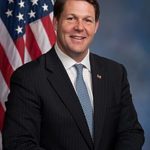
“It’s not just fossil fuels that make West Texas great; our region is home to the six largest wind farms in the United States. No other area in our country has a larger impact on this form of clean energy than West Texas. The energy produced by wind power in West Texas has the capacity to power between 2 and 3 million homes a year. Additionally, District 19 is home to the National Wind Institute at Texas Tech University.”

“West Texas currently accounts for 81% of the onshore production for the entire state of Texas. The oil and gas producers here in District 19 provide a safe and affordable supply of energy to our nation, and thousands of jobs to our people. We need to reduce regulations, cut taxes, and allow these industries to grow and thrive. Like Texas, our country needs more pro-growth, pro-energy policies.”
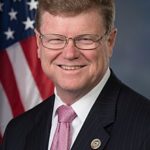
“The energy sector is crucial to our economic growth and high energy costs have a major impact on job creation. We have an abundant supply of natural resources in Nevada and across the country that we must use to meet our nation’s energy requirements. We need policies that allow us to harness our own resources, develop new sources of energy, improve our permitting processes and create jobs here at home.”

“In Nevada, new sources of energy, such as geothermal and solar are showing promise. Geothermal in particular brings jobs and growth to Nevada with 20+ plants in operation providing clean, reliable electrical capacity to the grid and significant additional capacity under development.”

“The answer to clean energy is right in front of us. I recently toured both nuclear plants in my district, and I feel safer at night knowing all that nuclear power plants do for our state and country. I hope that my colleagues in Congress legislate like our environment, economy and national security depend on nuclear energy. Because they do.”
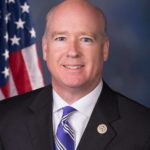
“We must conserve our natural resources and make sure that we utilize them in an environmentally friendly way. America needs to take a hard look at how much oil we consume and factor in the huge energy demand of growing markets in the developing world such as China and India. However, I certainly oppose policy proposals such as Cap & Trade and other similar carbon emission control systems that harm economic growth and destroy American jobs.”

“Only through better development of technology, the kind of stuff we’ve worked on for decades here in Wyoming, can we actually start to remove carbon dioxide from the atmosphere.”

“But I certainly believe we have a responsibility to protect the environment and to limit those influences that may impact the climate change in our country, and let the scientists and the experts determine what’s responsible for it.”

“South Carolina has been recognized for her natural beauty for centuries, and a key part of preserving that beauty for generations to come is using the cleanest energy sources possible.”

“The wind energy industry plays a central role in generating quality jobs and promoting economic growth in Oklahoma. As governor, I strive to foster a pro-business and regulation friendly environment for all industries, and I remain committed to working with our wind producers to ensure American energy leadership in the global marketplace and to continue to provide low-cost reliable energy here in our great state.”

“Preserving our natural resources for current and future generations is a top priority.”
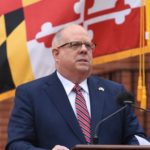
“Our most important job as governors is ensuring the safety of our constituents. So when we face a threat to people’s livelihood and way of life, showing leadership means acknowledging the risk and addressing it. Climate change hits Democrats and Republicans alike, and we need to work together, despite our differences, to stop it.”

“Nebraska is a leading state in energy innovation, and I was able to share our innovation story during today’s discussion. From our first-in-the-nation utility scale hydrogen plant to enzymes that are helping our corn produce more ethanol, Nebraska’s pioneer spirit is helping achieve greater energy security and independence in the 21st century, so we can continue to grow our state and our nation for years to come.”

“As governor of the great State of Iowa, it’s no secret that I’m a passionate supporter of the renewable fuels industry. We take great pride in our diverse energy portfolio, which includes renewable fuels. Cleaner burning, lower cost fuel options benefit all Iowans and the country. The renewable fuels industry in Iowa accounts for nearly $5 billion of Iowa’s GDP, generates over $2.4 billion of income for Iowa households and supports almost 47,000 jobs throughout the entire Iowa economy.”

“We’ve shown in Indiana that we can have a roaring economy [prior to the pandemic] while also improving and conserving the environment.”

“Nobody knows better than the governor of a state like Arizona, that has such an arid climate and has had to make so many plans and sacrifices to have the rich and abundant water resources that we have, that we have to pay attention to our environment.”

“Climate is changing, there’s no question about it. Sometimes what you do from a regulatory standpoint might be counter to what the right thing to do is, but you’ve got to recognize it. It’s here. We’ve just got to figure out how we’re going to cope with it. And we’ve got to slow it down. Now, reversing it is going to be a big darn job.”

“We’re not saying that climate change is not real. It is real. It’s how do you have that balance between making sure you’ve got jobs and businesses moving and then also making sure you protect your climate. The answer’s in the middle.”

“Climate change is not the hoax that some claim it is. But to the extent that it’s a crisis, people like Mr. Sanders, Ms. Ocasio-Cortez and Ms. Warren want to use it as an excuse to radically transform the American economy and political system along lines that have less to do with climate change and much to do with their ideological animosity to the status quo.”

“While big-government proposals and economic takeovers often dominate the headlines, the truth is that any consequential plan to address climate change must include a strong commitment to innovation-based policy and global deployment.”

“What countries have to do is that they have to satisfy three Es: they have to satisfy economic growth, they have to satisfy environmental sustainability and that is done through energy use.”

“Time-tested conservative principles like promoting innovation, empowering entrepreneurs, and lowering regulatory barriers are the best ways to deploy new technologies that will create a healthy natural and economic environment. These principles, not top-down and heavy-handed government intervention, unleashed the fracking revolution that dramatically cut emissions in my home state of Pennsylvania and the entire country.”

“Climate change is real, and we need to address it. The question is, how do we do that? I think we should support all ways of decreasing emissions, from traditional renewables to cleaned-up fossil fuels to nuclear to innovative new tech like carbon capture.”

“Climate change is causing real problems. Real problems deserve real solutions. Many of the proposed ‘fixes’ for climate change are unrealistic & dangerous.”

“One of the things I told the president when he asked me about my position on climate is I said it doesn’t matter. People want us to deal with it. The question is: Do we deal with it on our terms or walk away from it?”

“America has always been a leader in developing cutting-edge technologies and pushing the limits of our imagination. It only makes sense to apply that same approach and dedication to reducing global emissions and creating new American jobs.”

“What conservative Republicans really want is a depoliticizing of the climate issue. They don’t necessarily think that the alarmist rhetoric and certainly not the policy proposals of the left are what they’re looking for…On the other hand, the idea that the climate’s not changing and this is an issue that no one should talk about isn’t where they’re at.”

“I believe the climate is changing. I believe that all flora fauna and human beings have some impact on that. I also believe fervently that we can protect our environment without wrecking our economy.”

“Transitioning to clean, renewable energy insulates us from sudden and unpredictable fluctuations in the price of natural gas, creates local jobs that can’t be shipped overseas, attracts investments to our state from companies looking to put down roots, conserves our natural resources – helping to protect our outdoor sporting and hunting pastimes – and increases our grid and national security.”
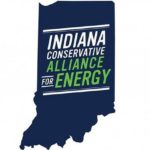
“Moving Indiana toward an all of the above energy policy will create jobs, expand our economy, make our communities more secure through energy independence, improve public health, and leave behind a powerful legacy for future generations of Hoosiers.”
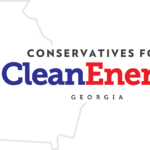
“Clean energy is having a transformative impact on Georgia’s economy and environment: our state has grown into a destination for clean energy and our economy is reaping the benefits.”
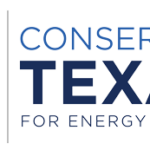
“Clean and renewable energy sources represent the future of energy in Texas. As conservatives, we encourage competition and free markets, which allow for vibrant, sustainable economies. Texas inventors, entrepreneurs, and manufacturers are leaders in a global transformation toward cleaner, more secure energy choices that create American jobs and protect our environment.”

“Those who say climate change is an existential threat are completely mistaken. We do have time to address this. We should address it.”

“We’ve seen billions of dollars in capital investment in the solar industry alone in Tennessee. Coupled with the investments we’re seeing in energy efficiency, sustainable transportation and other forms of clean energy, the clean energy sector has the potential to truly become a bright spot for Tennessee in terms of job growth.”

“Given the remarkable transformation in technology, especially here in Texas, that has allowed our country to become nearly energy independent and driven the development of more clean burning natural gas power plants, we are enjoying a period where emissions are reducing and air is cleaner. Certainly, we can do more by supporting the further development of more sources of baseload power. I am particularly interested in next generation nuclear reactors that are smaller, safer, can be sited virtually anywhere and create much less waste. They are emission free and provide the kind of reliable baseload power that wind and solar simply cannot do.”

“I have always supported science-based, common-sense policies that protect our environment and the beautiful California coastline. In Congress, I will work towards climate solutions that promote innovation and diversification. We need leaders that understand the challenge at hand, but also have the foresight not to overburden small businesses with meaningless regulations.”

“We always should promote policies and innovation to have clean water, air and healthy food for our citizens. We all want a clean planet and a healthy environment for our children. There is real debate among scientists about how much climate change is natural and how much is man-made, but we need to approach the issue in a common sense way that recognizes we can balance protecting the environment and not destroying jobs and opportunity for lower and middle income Americans.”

“Climate change is real, and the evidence is right here in Miami. Miami’s pristine coastline must be protected. The water level is rising in at an alarming rate and coastal areas like Miami Beach may become uninhabitable in a matter of decades, not centuries, unless we work to combat the problem. As studies have shown, Miami will need some major feats of engineering, way beyond the resources available at the state and local levels.”

“The cost of the Green New Deal is tens of trillions of dollars. The Green New Deal would raise the cost of motor fuel and would impoverish rural families. I will fight to protect rural residents by opposing radical ideas like the Green New Deal and other extreme environmental legislation. Our focus should be on developing clean coal technology and nuclear power.”

“On the energy production side, it comes down to taking all the above approach, understanding all the existing subsidies and getting to a point where you’re not just fighting subsidy with subsidy. It’s recognizing our energy independence is going to require not only a shift to renewables, but also maintaining some on demand energy production. Whether that’s natural gas or nuclear, it has to be part of the mix. That’s where I think from an economic standpoint we’ve seen price per watt generation get to a point where its just about comparable.”

“When it comes to our energy sector, affordability, sustainability, and energy independence are critical to the future of Iowa and America.”

“Radical environmental policies that unnecessarily damage our economy must be rejected. We all have a responsibility to take care of the planet and protect the environment, but this is best done through conservation efforts and common sense rules, not excessively burdensome mandates”

“We will continue to reduce our greenhouse gas emissions through energy conservation, expansion of solar energy generation, increased use of electric vehicles and using innovative new technologies.”

“Joe Biden’s new climate change package is yet another Green New Deal, and Kendra Horn continues her support of this extreme leftist candidate for president. Biden has made it clear that he cares nothing about jobs related to oil and natural gas exploration, a lifeblood for Oklahoma’s economy. Oklahomans need a congresswoman who will stand with Oklahoma companies, protect Oklahoma jobs and fight for Oklahoma families. I am that Congresswoman.”

“The U.S. oil, gas, and electric markets must be run by private industry with limited government intrusion. I am fully supportive of new and alternative energy technology and production. However, these should be developed in the free market and not in the vacuum of big government. Capitalism is the answer to reliable and sustainable energy.”

“We must address climate change without putting more burdens on the backs of working class Americans. When clean jobs are readily available, then we can address climate change adequately. There must be an end to government overreach and overregulation; it could do irreparable harm to the middle class.

“I don’t buy into that [environmental alarmism] , and I think those sort of scare tactics only hurt our efforts to find good solutions. But I do think there are a lot of things we can do and work on, but it can’t be a winner-take-all or loser-take-all proposition.”

“NEPA is a litigation nightmare and time sink for many projects involving federal funding. To quote the President, when talking about how long it takes to get a permit to build, ‘that’s big government at its absolute worst.'”

“I accept the science as it’s presented to us. Science in the climate arena is as substantial as the science that underlies any number of environmental challenges. It’s a serious issue that deserves a serious and effective response.”

“We’re going to address the climate. It makes sense for us to have policies that reduce emissions, that reduce the pollutants that are in the air, to reduce the particles that cause massive health problems around the world.”

“We believe that there is much common ground on which all sides of this discussion could come together to address climate change with policies that are practical, flexible, predictable, and durable.”

“We envision conservation policies and practices that focus on results rather than rhetoric and replace conflict with cooperation. Our goal is to foster a culture of environmental entrepreneurship.”
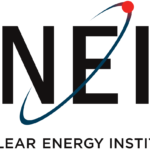
“We need deep decarbonization to hit our climate goals. Nuclear power can get us there. As our largest source of clean energy, nuclear power is critical to reduce carbon emissions. Wind, solar and geothermal are on the rise, but the smartest policies will ensure these technologies complement, not replace, nuclear’s clean energy production.”
“We know nuclear power slows climate change. We also know that every time a nuclear reactor closes in the U.S., carbon dioxide emissions go up.”

“It will be largely up to the business community to develop, finance, build, and operate the solutions needed to power economic growth worldwide, mitigate greenhouse gas emissions, and build resilient, lower-carbon infrastructure. Thousands of businesses already are taking action in their own operations and along their value chains by investing in technology solutions and enhancing their efficiency.”

“The future of clean energy must be rescued from failed leftist policies and returned to its roots in conservation and conservatism. American energy policy must derive from a fierce sense of patriotism, technological innovation and entrepreneurship, a respect for individual rights and liberties over government intrusion, and reverence for God and His creation.”

“It’s time we focus on clean energy policy solutions that work. Entrepreneurs, innovators, and market solutions can solve our global environment and energy challenges better than government. Let’s find ways of supporting innovation with less regulation, not more.”

“Each of us is responsible for ensuring the land that shaped our heritage and culture is well cared for and continues to define who we are for generations. As conservatives, we live our conservation values every day. Whether we are farmers, hunters, fishermen or all of the above, we care for the land and water because they are what sustain our bodies and our souls.”

“The Clean Capitalist Coalition is a group of policy institutes, advocacy organizations, scholars and experts working together to explore and develop innovative policy ideas that reduce barriers to clean free enterprise and conservation, to reduce pollution while increasing inclusive prosperity and freedom.”

“Energy affects every facet of American life, so every one of us has a stake in supporting clean, responsible energy solutions that advance our nation’s energy, economic, and environmental security while increasing America’s competitive edge.”

“Natural gas is an important tool in the suite of greenhouse gas emissions reduction options available to the United States. Natural gas will continue to benefit our nation as states move to further reduce carbon dioxide emissions created in electric power generation.”

“Real climate action cannot be achieved alone, and the United States must continue leading the world in the fight to mitigate climate change, and adapt to its consequences.”

“There are a number of factors that contribute to that, including human activity. The question is, what are we going to do about it and at what cost?”

“I believe climate change is real. I believe that human emissions of greenhouse gases are a major cause of climate change. And I believe the Democrat cure for climate change, their “Green New Deal,” is so far out in left field that not many are going to take it seriously. So, as one Republican, I propose this response to climate change: the United States should launch a New Manhattan Project for Clean Energy, a five year project with Ten Grand Challenges that will use American research and technology to put our country and the world firmly on a path toward cleaner, cheaper energy.”

“I’ll say it once again, it’s important to address climate change. I’ve said it many times in the past, it’s real.”

“Nuclear energy is clean, safe, and reliable. Going forward it must be a significant component of America’s energy profile, and to make that happen we need to stay ahead of the technological curve.”

“We do need to — from a military standpoint, even a national security standpoint — deal with the effects of a warming Earth.”

“Congress has an obligation to assist in bringing renewable sources of fuel to fruition. Alternatives such as wind, solar and hydropower have great potential, but unfortunately they currently only make up a fraction of our overall energy usage.”

“It is clear the climate is changing to me. We need policy responses that work.”

Republican Congressman Denver Riggleman voted against the bill, although he says he disagrees with those who call climate change a hoax. “But you also have some people, I think, that have taken this to a level of hyperbole where they treat it almost as a religion or something to maybe utilize as a cudgel that things are going to end, ‘Oh my goodness it’s the end of the world.’ That is ridiculous. I think we need to look at this in a very common-sense way.”

“I understand the climate is changing, and I think that CO2 emissions have a warming effect.”

“We can all agree that climate is changing. We need to take positive steps to address it.”
-150x150.jpg)
“As Secretary of Defense James Mattis has said, climate change is a challenge that requires a whole-of-government response. If we’re going to make progress to protect our environment, it’s critical that people on both sides of the aisle speak out about the serious impact that climate change will have on our environment and our economy”

“I believe advancing technology is the best path forward. As we speak, industry and governments around the world are examining carbon removal and carbon storage technologies. There are some big ideas out there—from direct air capture to genetically modified phytoplankton and giant kelp farms in the ocean that can absorb carbon dioxide. America must lead the way and partner with industry to develop innovative technologies and solutions to the problems discussed here today.”

“I think we need to have an all-of-the-above approach basically emphasizing green-friendly things as best we can. But also recognizing that they can’t stand on their own two feet and we can’t destroy our economy in the process.”

“We must protect the environment, but the #GND is the wrong approach. Technology has helped US #energy-related carbon emissions fall faster than any other nation.”

“Climate change is a real and serious threat, but I do not believe that radical solutions proposed in the Democrats’ ‘Green New Deal’ are the solution. The Green New Deal is projected to cost up to $93 trillion over ten years, at an estimated cost of over $60,000 per year per household. I believe that we need innovative and market-based solutions to combat climate change.”

“A clean energy future will require nuclear energy to be reliable, affordable, and accessible to the private and public sectors.”

“I believe that we can address this challenge by having the federal government focus on basic research in the areas of energy storage in order to make renewable power dependable, on advanced nuclear power solutions to produce zero-emissions electricity and on finding ways to reduce emissions from today’s conventional fuel sources.”

“Any serious conversation about the future of America’s energy production must include nuclear energy, which accounts for 20 percent of all American energy production and 55 percent of American carbon-free-energy production.”

“Momentum is building on both sides of the aisle for practical, bipartisan solutions to combat climate change. As a Republican and Democrat, we both know the time to act is now.”
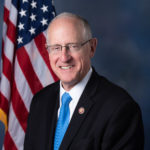
“The outpouring of bipartisan support for carbon capture and sequestration projects is overwhelming.It’s rare that we have the opportunity to support a policy that moves America towards energy independence while reducing emissions from traditional fuel sources, but this legislation does just that by encouraging the use of CCS technologies. American innovation built this country, and keeps this country growing. I’m proud to support the technologies that are leading the way.”

“Climate change is an issue that needs to be addressed. … The right way to tackle climate change policy is by continuing to remove barriers to innovation, incentivizing more clean energy, and putting forth realistic, free-market solutions driven by the American consumer – a proven approach that has already resulted in significant emissions reductions in the United States.”

“The question remains: how do we balance the apparent need for fossil fuels with the call for lowering the amount of carbon dioxide in our atmosphere? We do that by incentivizing the creation of technologies that capture the carbon before it leaves the power station and developing innovative ways to use that captured carbon for commercial purposes.”

“The United States can lead in reducing carbon emissions without jeopardizing our economy by focusing on technology and innovation.”

“Nuclear energy plays an important role in Georgia’s energy portfolio, as it accounts for more than a quarter of all power generated and is the only clean-air source that can produce large amounts of electricity around the clock.”

“We should encourage the cost-effective development of renewable energy technologies, but we need to get out of the business of picking winners and losers.”

“We need to develop a 21st century, what I call moonshot approach to help the United States be the world leader when it comes to energy resources, and to be carbon neutral by let’s say 2040 or 2050. We’ll have to figure out what that consensus is, but this will help restore, renew, and rebuild America from its current COVID-19 challenges.”

“API and its members commit to delivering solutions that reduce the risks of climate change while meeting society’s growing energy needs. We support global action that drives greenhouse gas emissions reductions and economic development.”

“We have to act now if we want to unlock the solutions that will aggressively combat climate change. Through smart, technology-neutral tax incentives, we can unleash American ingenuity and encourage the kind of innovation at scale that will significantly reduce carbon emissions.”

“The United States can continue to supply these fuels to [China and India], and we can do so with less impact on the environment than other suppliers. Developing technologies such as carbon capture to sell to the countries burning fossil fuels will help them with environmental protection and create jobs here at the same time.”

“By finding innovative solutions, America can unleash the promise of clean energy systems for a better tomorrow.”

“Nuclear energy technology can help meet the world’s clean energy needs. Our energy future is global, and steps like this DFC decision are crucial to meeting climate and energy leadership goals. Lifting this prohibition will simultaneously strengthen the U.S. economy while boosting international relations and global energy security.”
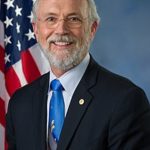
“And the investment in clean energy is not stopping. U.S. Department of Energy Secretary Dan Brouillette continues to focus on strengthening the United States’ position as a nuclear energy leader. Nuclear energy is a clean, reliable energy resource that provides countless benefits to our military, our national security, and our local cities and municipalities. The Columbia Generating Station in Richland, the only nuclear power plant in the Pacific Northwest, provides affordable carbon-free power to homes and businesses throughout the region, and we should continue to promote nuclear power as part of our country’s clean energy future.”

“The implementation of #45Q will help encourage American competitiveness in a growing and competitive global market for #CCUS technologies and will positively impact domestic energy, manufacturing, and construction jobs.”

“Free-market innovation — not government regulation or taxation — is the best way to reduce carbon dioxide emissions.”

“Too often, climate change policy is oversimplified to false choices: renewables versus fossils, economy versus environment, 100% reductions versus inaction. The reality is this: solutions must make a clean energy transition cheaper and faster while preserving economic growth and reflecting the global nature of the challenge.”

“My bill addresses the most vital nuclear energy priorities, ones that have the greatest potential for supporting the future of the American nuclear industry and will provide the largest return on our investment in the clean energy future.”


“Advanced nuclear energy can help mitigate climate change by providing energy that is both reliable and free of greenhouse gases.”

“Our solutions are often different from those on the left, but we can agree that climate change is a growing challenge and that we need to work across party lines to solve it. Climate change will affect all of us regardless of partisanship, so delaying action only exacerbates the problem.”

“Under Gardner’s bipartisan bill announced last week, the nation’s ability to manage and increase public lands would be bolstered. This is critical at a time when animal species, including birds, deer, elk and many others, are struggling to find wild habitats that can sustain healthy populations and the globe is fighting deforestation and carbon-induced climate change.”

“The climate is changing, we know that. And it’s not a far stretch to say decades and decades and decades of the Industrial Revolution has had some impact on our climate.”
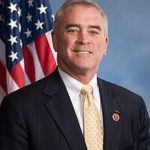
“By incentivizing the private sector to invest in new technology, we can continue meeting our climate goals and solidifying America’s role as the leading exporter of climate solutions.”

“By investing in carbon capture technology, the U.S. will reduce our carbon emissions while driving economic growth and creating jobs.”
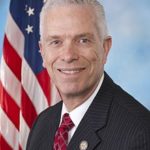
“What’s going to really address the climate concerns across the globe is innovation.”

“I have seen glaciers receding. I would say there’s an emergency and an absolute need to address it quickly. We can do it better with coal.”

“Whether we call the problem ‘climate change,’ ‘global warming,’ or my preference of ‘climate volatility,’ the bottom line is that Congress has finally stopped talking about how to define the problem and more about how to solve it. One area of potential consensus––trees. While expanded carbon capture technology, conservation, mass transit, bikes, scooters, electric cars, wind, solar, biofuels, and even nuclear energy will play significant roles in reducing carbon emissions, trees are nature’s best way of cleaning out excess carbon pollution from the atmosphere.”

“The most effective thing we can do on this committee to address climate change is to support more basic research that will lead to the next generation of technologies that are needed to reduce global emissions like carbon capture, nuclear power, and fusion energy.”

“The full breadth of global solutions to climate change, including technological innovations to reduce carbon emissions that are causing a rise in air temperature almost everywhere.”

“The climate is changing. Humans and global industrial activity are contributing. Thankfully, there are realistic free-market solutions that will lead us in the right direction.”

“The more realistic approach is to focus on the advanced technologies – developed in the United States – that can meaningfully address emissions where they are increasing the fastest, which are in poorer nations striving for the benefits of advanced energy and industrial systems.”

“I don’t know anyone here or anyone in Congress that denies the fact that climate is changing and there is an impact we need to address.”
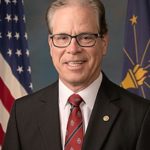
“Washington has been paralyzed by partisan gamesmanship for too long on this issue. Through the Climate Solutions Caucus we can have real conversations about protecting our environment, securing America’s energy future and protecting American manufacturing jobs.”

“Climate change threatens Maine’s natural resources & economy, including our forestry, fishing, agricultural, & tourism industries. We must transcend geographical and partisan lines to address this challenge.”

“I can’t stop jet traffic. We’re not going to stop cars. We’re not going to stop China or India from firing up coal fire plants. But we should have a plan for how we’re going to start to deal with these problems.”

“Clean air and clean water is an important issue and it’s one that both sides could find common ground on if they wanted to. But unfortunately, the socialist Left has taken over the debate and is more interested in pushing their radical policies on the American people than finding real solutions. … Republicans have proposed commonsense solutions to climate change that are good for the environment and our economy, but Democrats have continually let the most radical voices dominate the conversation.”

“Climate change is real, and the best way to combat it is by reducing not only our nation’s carbon emissions, but that of the rest of the world. The changes we are seeing in the climate pose both short- and long-term challenges, and I believe they can be addressed in two major ways. First, we need diversity in our energy sources. Energy diversity is energy security. Similar to one’s own personal investment strategies, this nation cannot afford to put all of its eggs in one basket. If you’re looking to invest, you don’t put all your savings into one stock and let it ride. You diversify your investments in mutual funds, bonds, real estate, etc. Second, we need to support market-driven innovations to develop new clean energy technologies that will put the United States at the forefront of environmental technologies.”

“Preserving trees means more carbon sequestration. Fewer climate-harming pollutants will be belched into the air from uncontrolled wildfires. These are outcomes we should all desire.”

“As we move in the direction of a cleaner energy portfolio, a goal all of us share, we must keep unleashing the affordable innovation that made us the world leader in reducing emissions — and not play into China’s hands.”

“This is the second opportunity we have had this year to discuss climate change. I am hopeful that we can examine common sense solutions that balance environmental challenges with our nation’s economic needs and budgetary reality. … Nuclear energy is important to both our power supply and addressing climate change … It is my hope that we can come together to support market-based solutions that make clean energy more affordable and reliable, create jobs, and address climate change challenges.”

“Investing in research and development for energy storage technologies is a key component to an all-of-the-above energy strategy and will allow the United States to remain a global leader in energy research and development. As we rely more and more on renewable energy sources like wind and solar, it is critical to invest in energy storage to enhance grid resiliency. This commonsense, bipartisan proposal shows members on both sides of the aisle are committed to working together to pursue technologies that will help our environment and grow our economy.”

“We believe that the key to successfully tackling climate change is American innovation. Innovation is what made America the global energy leader, and what will make us the driving force behind clean and affordable energy as a realistic, practical solution to greenhouse gas emissions.”

“Instead of voting on another political messaging bill we should focus on what Congress can actually do to address climate change. We should expand clean energy deployment to communities throughout the U.S. and pursue innovative, market-based solutions that help the environment.”

“As our nation reaches its energy dominance and continues to reduce emissions through innovation, House Democrats want us to put our economic growth, jobs, and security at risk…”

“Climate change must be addressed proactively with leaders from both sides of the aisle working to protect our planet.”

“It’s bipartisan opportunities, like the farm bill, that will reduce emissions, without risking our manufacturing jobs or placing the burden on Americans through increased energy bills. House Democrats should be looking for more of these opportunities, instead of putting forth unrealistic legislation, like the Green New Deal, that will only result in increased costs for the American people and stifle our growing economy.”

“Climate change is an issue that needs to be addressed. … The right way to tackle climate change policy is by continuing to remove barriers to innovation, incentivizing more clean energy, and putting forth realistic, free-market solutions driven by the American consumer – a proven approach that has already resulted in significant emissions reductions in the United States.”
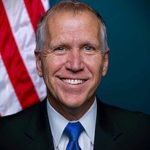
“Climate change does pose real long-term challenges to our country and the rest of the world. Economic prosperity and protecting our environment are not mutually exclusive goals. I believe we can address climate change with realistic and responsible market-driven solutions that foster innovation, competition, and economic growth.”

“In order to truly make progress in addressing climate change we must work together. I will continue working on sensible, bipartisan efforts to promote conservation, reduce emissions, and strengthen our economy.”

“The question is how do you address it. … The way to do this consistent with American values and American capitalism is through technology and innovation … not to shut down your economy, throw people out of work”

“There’s no question that we’re experiencing climate change and that humans are a significant contributor to that. In my view, the course forward is going to require innovation and technology breakthrough because nothing I’ve seen is going to reverse the warming trend other than that.”

“People say Republicans are deniers and Democrats want to do something about it. Republicans like me want to do something about it too. And we’ve done things about it. We actually have a reduction in CO2 emissions in this country at a time when other countries are increasing their emissions.”

“We are having conversations about how to address the problem, which is emissions. To do it in a way that continues to let the economy flourish and come up with solutions.”

“I was pleased that all the panel and almost everybody up here on the dais has agreed that climate change is real.”

“Members are openly using the term climate change. You are not seeing this kind of dismissive attitude but more open conversations about some of the challenges, some of the technologies we can look to, some of the solutions.”

“There is a growing consensus on our side that man-made emissions are contributing to global warming, that the ‘green deal’ is absurd, and we should be able to find a more appropriate solution to the problem.”
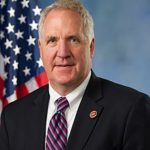
“We all agree extreme weather and climate change presents risks to our communities”

“I look forward to working with my colleagues on the Select Committee [on Climate Crisis] to ensure that the United States can continue to rely on clean, affordable energy generated from our abundance of resources. I am focused on finding solutions on this committee that will allow the United States to become energy independent, preserve our environment, and build a strong economy. I hope that my colleagues will join me in prioritizing innovation, not taxation or over-regulation, in our energy industry to maximize efficiency, cut costs, protect and create jobs in West Virginia, and care for our earth for generations to come.”
Help us promote free market solutions for climate change.
Thank you for signing up